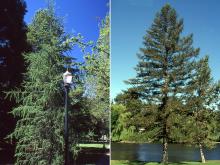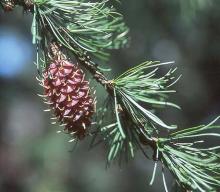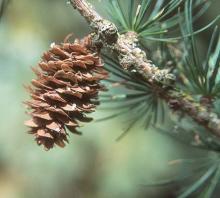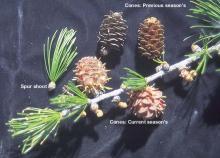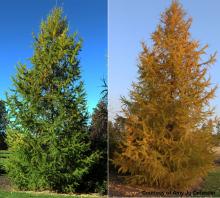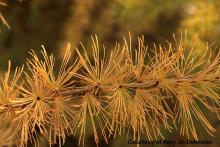Larix occidentalis
Common name:
Western Larch
Western Tamarack
Pronunciation:
LAR-iks ok-si-deb-TAH-lis
Family:
Pinaceae
Genus:
Type:
Conifer
Native to (or naturalized in) Oregon:
Yes
- Deciduous conifer, large, to 230 ft (70 m), open and pyramidal, horizontal branches, short spur shoots. The trunk is often devoid of branches over much of its length. Bark is reddish brown, scaly at first but becoming thick and furrowed. Leaves in clusters of 15-30, each 3-5 cm long, glossy pale green, yellowish in fall. Mature cones 3-5 cm long, reddish brown, about 30 scales, bract tip extends beyond the scale.
- Sun, moist, light soil; grows rapidly, and soon too large for the average garden.
- Hardy to USDA Zone 4 Native range extends from the eastern slopes of the Cascades to the Northern Rocky Mountains (i.e., Oregon, Washington, British Columbia, Alberta, Idaho, and Montana). Fairly common in the Camp Sherman area in central Oregon, although at the western edge of its native range.
- Limited number of landscape selections; one is 'Bollinger', a dwarf shrub.
- occidentalis: western.
Click image to enlarge




